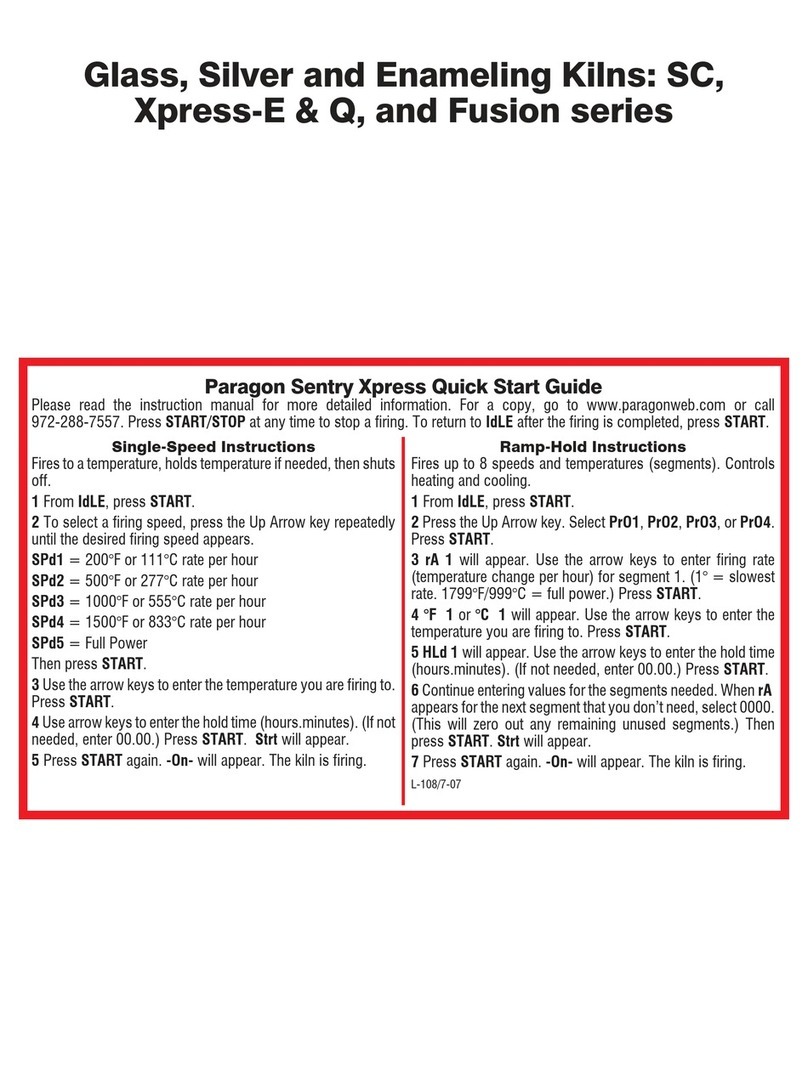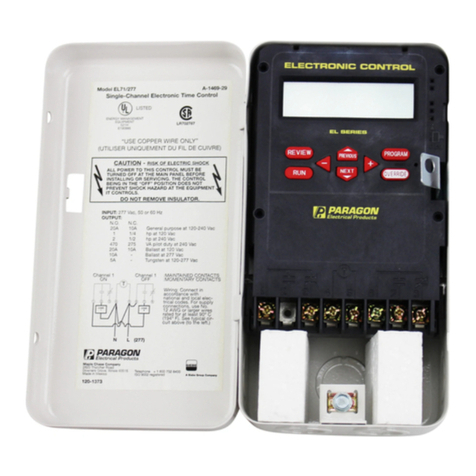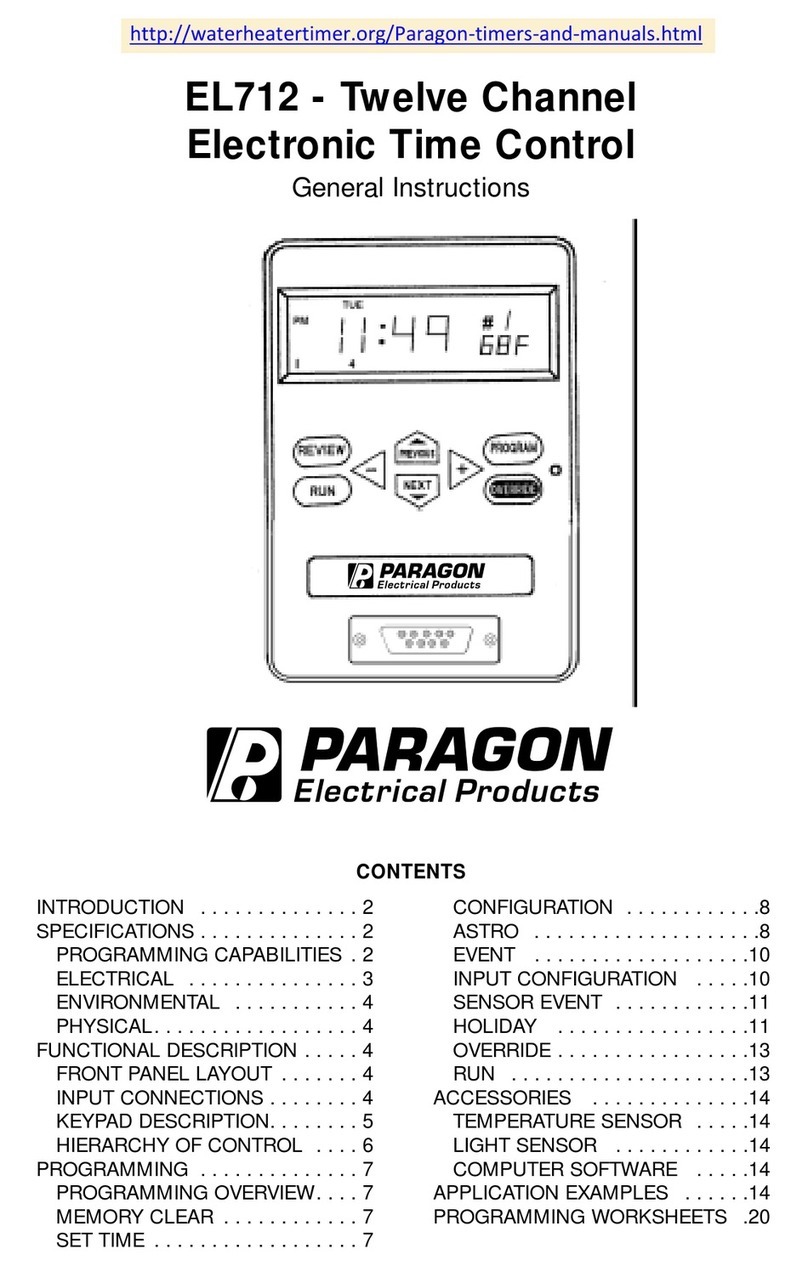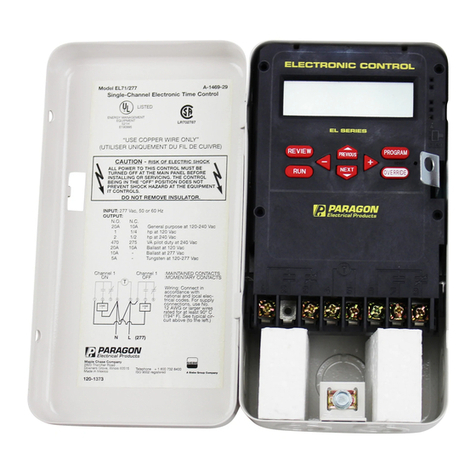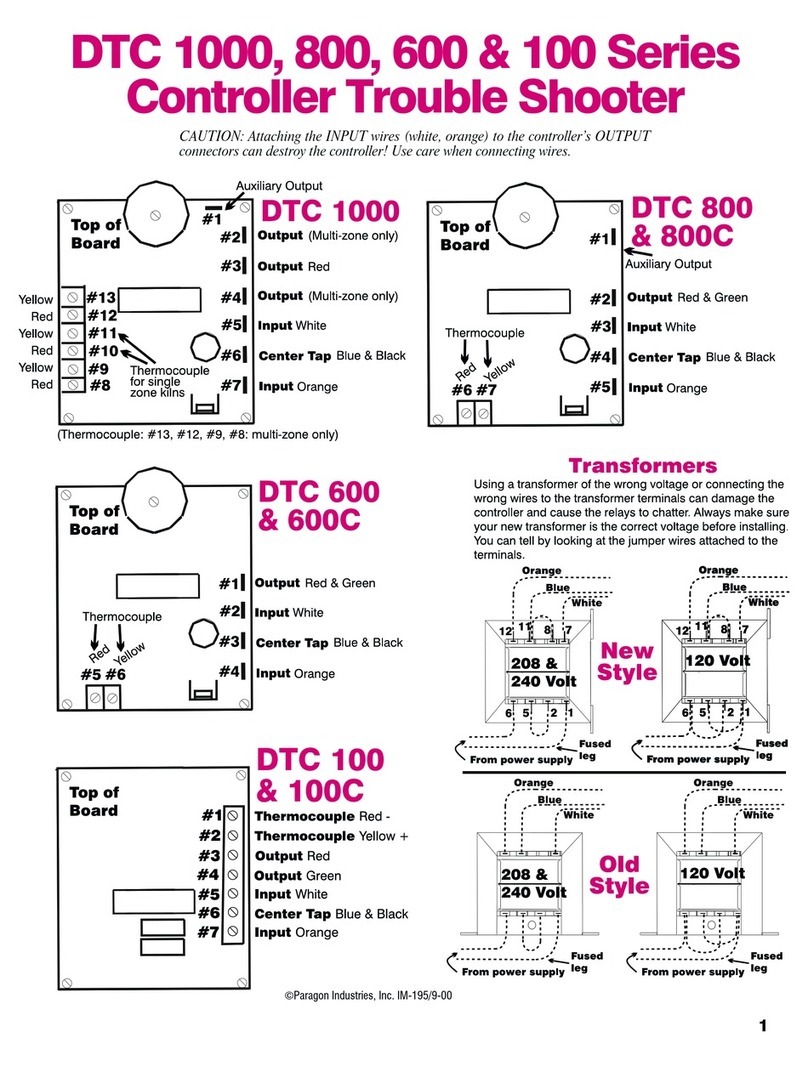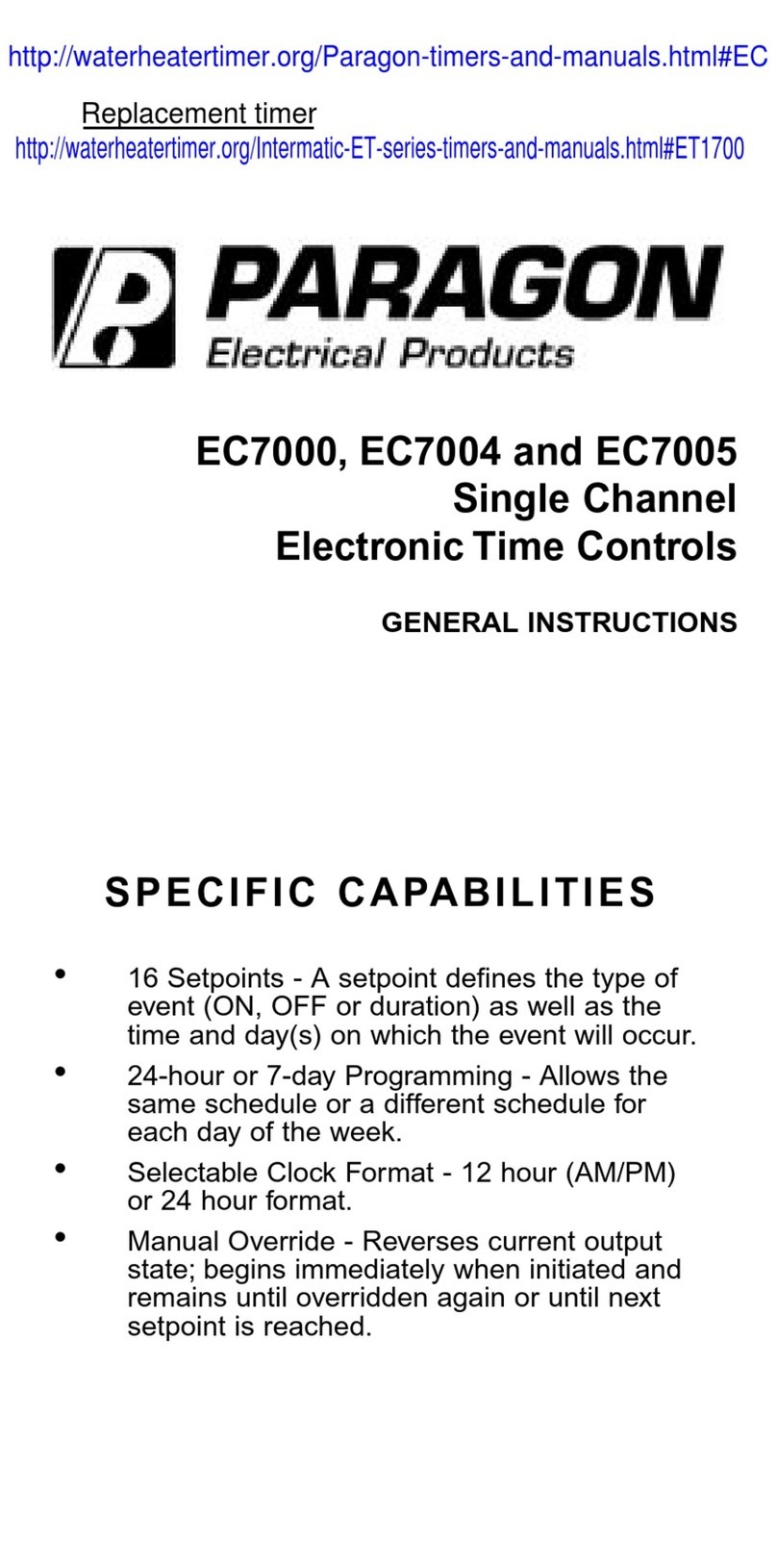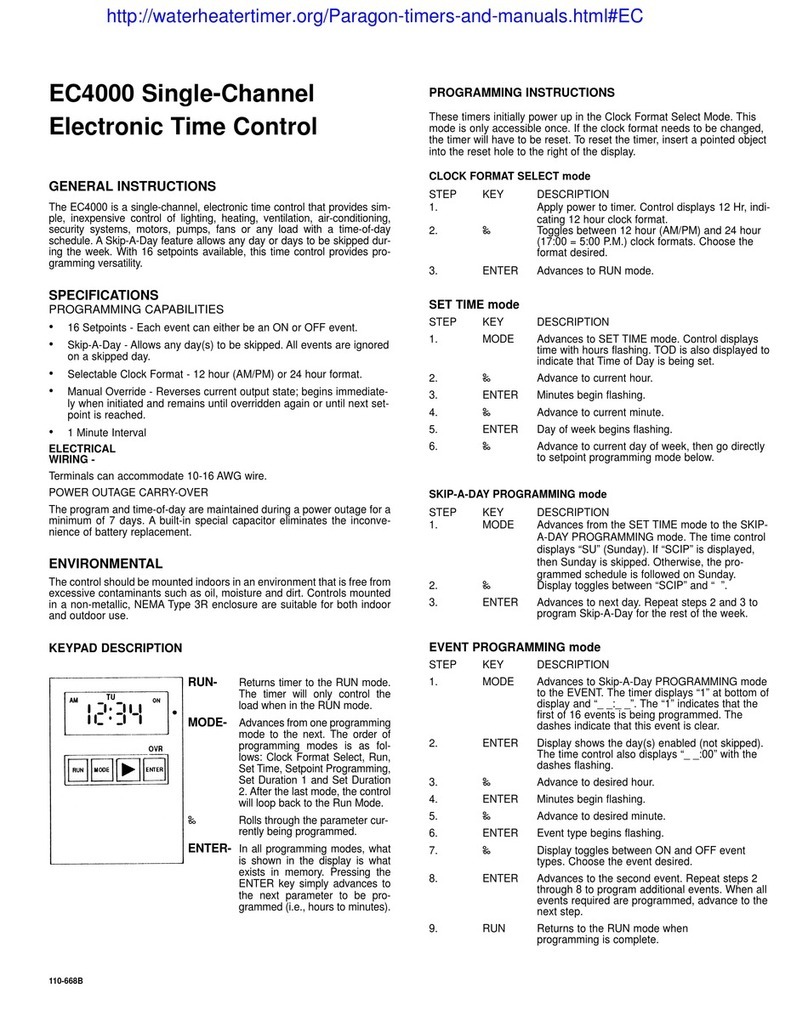Events Events header. Up to 128 events can be programmed. Events can be an ON, an OFF,
dUR1(duration), dUR2, dUR3, dUR4, CYC1 (duty cycle), CYC2, CYC3 or CYC4. An
event can be assigned to any channel. Each event can be assigned to any day or
combination of days including the 3 holiday schedules (A, B and C). Use the NEXT
key to begin programming.
The +/- keys will quickly step thru the events when the event # is flashing. Select the
event type, select the channel and program the hours and minutes while each of
these parameters are flashing using the +/- key.
Select YES for each day that is to be included in this event.
Input Configuration
Input header. Each input can be individually configured as a retriggerable override, a
toggle override, an enabler or as one of four sensor types. Use the NEXT key to begin
programming.
Choose the desired input type.
NONE: not used
On\d: On with off delay override
OVr: Toggle override
ENb: Enabler input
F: Fahrenheit temperature sensor
C: Celsius temperature sensor
L: Light level sensor
U: User defined sensor
This screen is used for setting the off delay time when the input is configured as an
On\d override type. The off delay is programmable from 0 seconds to 23 hours, 59
minutes and 59 seconds.
This screen is used for setting the on time when the input is configured as an OVr
(toggle) override type. The on time is programmable from 0 seconds to 23 hours, 59
minutes and 59 seconds. When this on time is set to 0:00.00, the override functions
as a toggle on/toggle off override. When a non-zero value is programmed, the over-
ride functions as a timed on/toggle off override.
This screen is used for assigning channels to the inputs. This applies only to the On\d,
OVr and ENb input types.
This screen is used for calibrating the sensors.The following calibration options are
provided: F: -12,-11,-9,-8,-6,-5,-3,-2,0,2,3,5,6,8,9,11
C: -8,-7,-6,-5,-4,-3,-2,-1,0,1,2,3,4,5,6,7
L: -4,-3,-2,-1,0,1,2,3
U: -8,-7,-6,-5,-4,-3,-2,-1,0,1,2,3,4,5,6,7
Sensor Events
Sensor Events header. Up to 32 sensor events can be programmed. A sensor event
can be assigned to any channel. Each sensor event can be assigned to any day or
combination of days including the 3 holiday schedules (A, B and C). Use the NEXT
key to begin programming.
The +/- keys will quickly step thru the sensor events when the event # is flashing.
Select the sensor number, select the channel and program the hours and minutes
while each of these parameters are flashing. When a sensor no. is shown, its sensor
type (F,C,L or U) is also shown. If the input is not configured as a sensor a question
mark (?) is shown.
10
